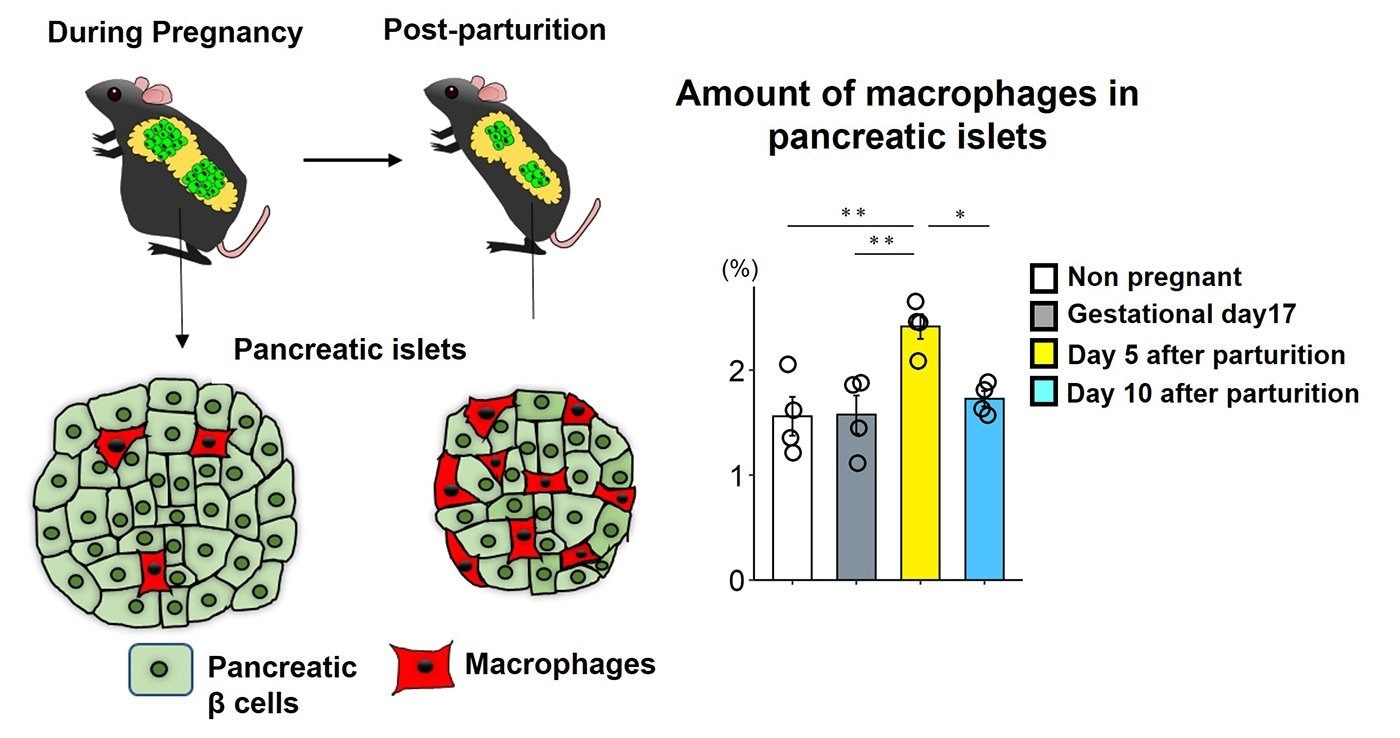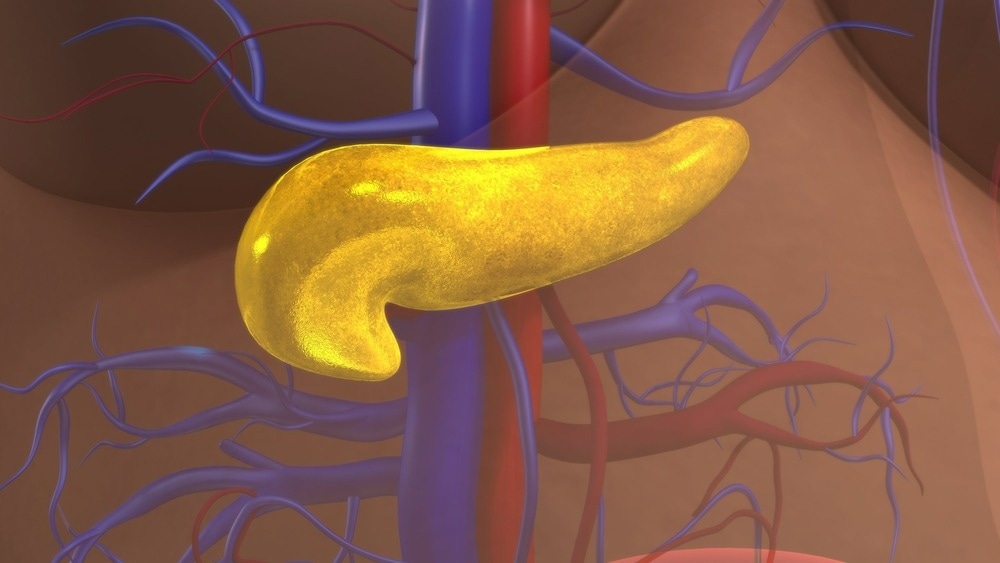Reviewed by Danielle Ellis, B.Sc.Dec 5 2023
Pancreatic beta cells, also known as β-cells, are situated within the islets of Langerhans in the pancreas.
 Macrophages are increased in pancreatic islets of Langerhans after delivery. Image Credit: ©Junta Imai et al
Macrophages are increased in pancreatic islets of Langerhans after delivery. Image Credit: ©Junta Imai et al
These cells exclusively produce insulin, a hormone crucial for reducing blood glucose levels. A decline in the number of pancreatic β-cells is a significant factor contributing to diabetes.
While it has been long understood that pancreatic β-cells increase during pregnancy and subsequently revert to their initial quantity after childbirth, the precise mechanisms governing this regression have remained elusive.
In a groundbreaking development, a team of researchers has unveiled that macrophages, a type of white blood cell, engage in phagocytosis, effectively “eating” the pancreatic β-cells. This discovery sheds light on the process by which these cells return to their pre-pregnancy levels.
The research, spearheaded by Associate Professor Junta Imai, Assistant Professor Akira Endo, and Professor Hideki Katagiri from Tohoku University's Graduate School of Medicine, disclosed their findings in the journal Development Cell on September 15th, 2023.

Image Credit: sciencepics/Shutterstock.com
Their initial investigation involved assessing the number of pancreatic β-cells in the islets of Langerhans in a mouse model of pregnancy. They observed that the cell count doubled by the end of pregnancy compared to non-pregnant mice, gradually declining and ultimately reverting to the original quantity post-delivery.
After we observed the islets of Langerhans before and after delivery, we noticed an increase in macrophages, which protect the body from infections by engulfing bacteria, foreign substances and dead cells, after delivery. When we applied treatment to inhibit this process, the blood glucose levels became too low (hypoglycemia).”
Junta Imai, Department of Metabolism and Diabetes, Graduate School of Medicine, Tohoku University
Further microscopic examination of the islets of Langerhans post-birth unveiled the phagocytosis of β cells by macrophages. This mechanism seemed to prevent a drastic decrease in the mother’s blood glucose levels after delivery by swiftly restoring pancreatic β cells to their typical pre-pregnancy quantity.
Subsequently, the research team pinpointed the protein accountable for luring macrophages into the islets of Langerhans: cytokine CXCL10. Consequently, inhibiting the function of CXCL10 was found to impede the reduction in pancreatic β cells following childbirth.
We hope our results will contribute to clarifying the means by which normal blood glucose levels are maintained as well as the development of methods to prevent and treat diabetes.”
Junta Imai, Department of Metabolism and Diabetes, Graduate School of Medicine, Tohoku University
Source:
Journal reference:
Endo, A., et al. (2023) Phagocytosis by macrophages promotes pancreatic β cell mass reduction after parturition in mice. Developmental Cell. doi.org/10.1016/j.devcel.2023.08.002.